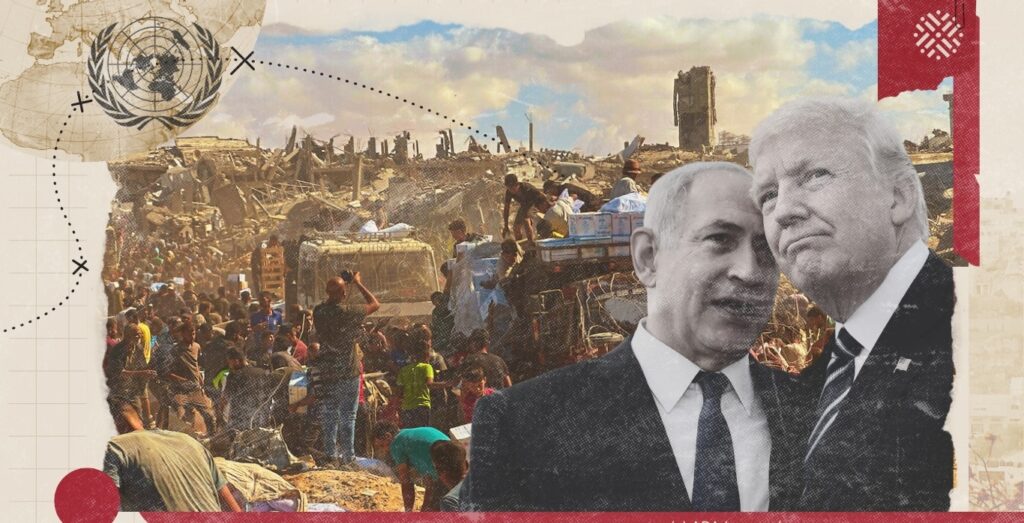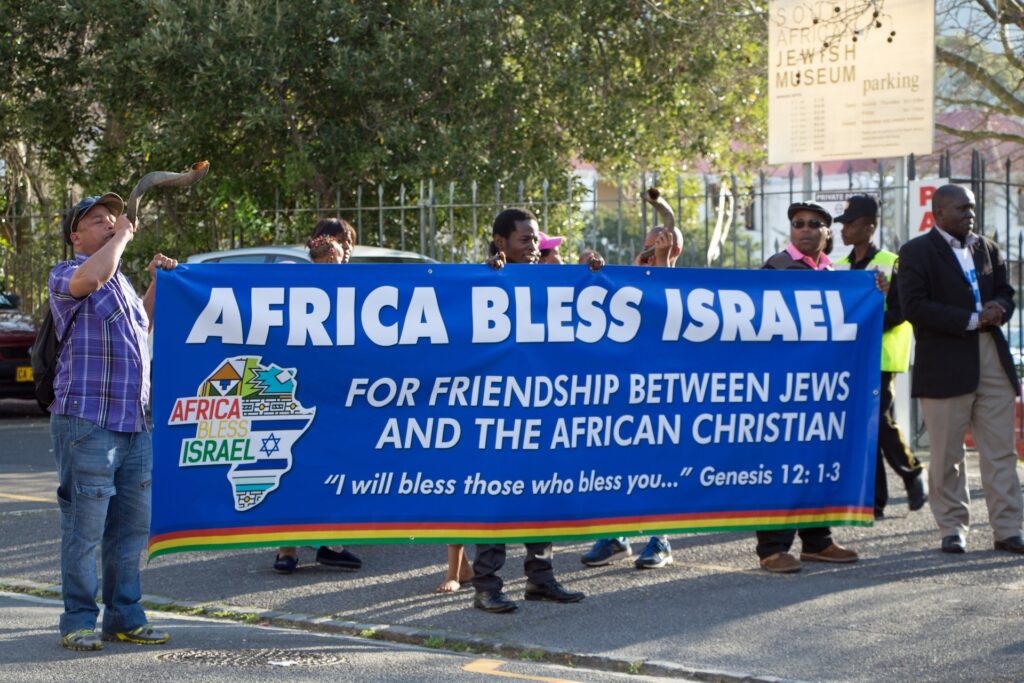- Topics
-
Topics
See our analysis on civil society and how it shapes culture, politics, and policies
Read our insights on the shifting political landscape and what it means for Palestine
Learn more about the policies and practices shaping the Palestinian economy
Strengthen your understanding of the unique conditions for Palestinian refugees across the Middle East
-
- Analysis
-
Analysis
In-depth analysis on existing or potential policies that impact possibilities for Palestinian liberation.
Insights and perspectives on social, political, and economic questions related to Palestine and Palestinians globally.
Concise analysis into a specific policy, its background and implications.
Commentary that brings together insights from multiple analysts.
Compilations of past Al-Shabaka works surrounding a specific theme.
Longer-form, ad hoc projects that seek to confront research questions outside the scope of our regular analysis.
A policy-driven research initiative by Al-Shabaka: The Palestinian Policy Network.
Our monthly webinar series that brings together Palestinian experts.
Featured
The global reckoning that followed October 7, 2023, marked a profound rupture in how Palestine is understood worldwide. The Gaza genocide exposed how Israeli mass violence is not exceptional or reactive, but foundational to the Zionist project. What was once framed as a “conflict” to be managed is now widely recognized as a system of domination to be dismantled. It ushered in a shift away from the technocratic language of peace processes and toward an honest confrontation with the structural realities Palestinians have long named: settler colonialism, apartheid, and the ongoing Nakba. The commentary argues that the Israeli genocidal campaign in Gaza has radicalized the world. When crowds march through global capitals demanding a free Palestine, they simultaneously articulate demands for the abolition of racial capitalism, extractive regimes, climate injustice, and all forms of contemporary fascism. In this moment of radical clarity, Palestine becomes a lens through which the underlying architecture of global domination is laid bare—and through which new horizons of collective freedom emerge. Tareq Baconi· Dec 21, 2025Inès Abdel Razek and Munir Nuseibah joined Al-Shabaka for a conversation on the politics behind the UNSC resolution, the implementability of the US-Israeli plan, and the scenarios now being advanced for Gaza and for Palestine more broadly.
Tareq Baconi· Dec 21, 2025Inès Abdel Razek and Munir Nuseibah joined Al-Shabaka for a conversation on the politics behind the UNSC resolution, the implementability of the US-Israeli plan, and the scenarios now being advanced for Gaza and for Palestine more broadly.
 European empires used Christian missions to legitimize conquest in Africa and advance imperial interests, laying the groundwork for a political form of Christian Zionism. British evangelicals were central in transforming Christian Zionism from a theological belief into an imperial strategy by promoting Jewish resettlement in Palestine as a means of extending British influence. This fusion of religious ideology and imperial ambition endures in contemporary Christian Zionist movements, which frame modern Israel as the fulfillment of biblical prophecy and recast Palestinian presence as an impediment to a divinely ordained order. This policy brief shows how these narratives and their policy effects have taken root in the Global South, including in South Africa. In this context, Israeli efforts increasingly rely on Christian Zionist networks to weaken longstanding solidarity with Palestinians and cultivate support for Israeli occupation.
European empires used Christian missions to legitimize conquest in Africa and advance imperial interests, laying the groundwork for a political form of Christian Zionism. British evangelicals were central in transforming Christian Zionism from a theological belief into an imperial strategy by promoting Jewish resettlement in Palestine as a means of extending British influence. This fusion of religious ideology and imperial ambition endures in contemporary Christian Zionist movements, which frame modern Israel as the fulfillment of biblical prophecy and recast Palestinian presence as an impediment to a divinely ordained order. This policy brief shows how these narratives and their policy effects have taken root in the Global South, including in South Africa. In this context, Israeli efforts increasingly rely on Christian Zionist networks to weaken longstanding solidarity with Palestinians and cultivate support for Israeli occupation. Fathi Nimer· Dec 7, 2025
Fathi Nimer· Dec 7, 2025
-
- Resources
- Media & Outreach
- The Network




Palestinian Political Disintegration, Culture, and National Identity
The Palestinian political field, dominated by the Palestine Liberation Organization (PLO) since the late 1960s, has been in a state of disintegration since the Palestinian Authority (PA) was established under the Oslo Accords. What has been the impact of PLO dominance and what were the repercussions of its disintegration for the Palestinian body politic? And to what extent has the disintegration of the political field affected the cultural field and its contribution to Palestinian national identity? These are the questions addressed in this commentary.12
PLO dominance of Palestinian political field began after the battle of Al-Karameh in 1968, which enabled it to establish a centralized relationship with the Palestinian communities in historic Palestine, Jordan, Syria, Lebanon, the Gulf, Europe and the Americas. These communities largely accepted the PLO as their sole legitimate representative despite the external influences upon it, including its heavy reliance on foreign aid, the ups and downs of its relationship with the country of residence, and its regional and international relations. As a result, the unique conditions and features of each community were neglected, as were their national, social and organizational responsibilities.
From its position of dominance, the PLO was also able to consolidate the practice of elite politics, which was common in the Arab world and internationally but which should not have taken hold amongst the Palestinian people given their dispersal and their struggle for liberation. The fact that the PLO emerged and functioned in a regional and international environment unfriendly to democracy both in theory and practice contributed to this development. The Arab region was dominated by regimes with totalitarian nationalistic ideologies, as well as authoritarian theocratic monarchies and emirates; democracy was seen as an alien and colonialist Western concept. Similarly, the PLO and its factions formed alliances with socialist countries and the countries of the Third World, few of which enjoyed political democracy. The rentier nature of PLO institutions and factions and their reliance on aid and support from non-democratic Arab and socialist countries reinforced the elitist and non-democratic approach to politics.
A third feature of PLO hegemony was that its factions underwent formal militarization at an early stage partly due to the PLO’s armed confrontations with host Arab regimes and partly to the fact that it was constantly targeted by Israel. This formal militarization, as opposed to guerrilla warfare, helped to justify the extremely centralized relationship between the political leadership and its constituency.
Between the 1970s and the 1990s, PLO factions and institutions suffered many severe shocks as a result of changes in the regional and international situation. These included the expulsion from Jordan following the armed clashes in 1970-71; the civil war that erupted in Lebanon in 1975, Israel’s invasion in 1982, the PLO exodus from the country and the Sabra and Shatila massacres; and the war against the Palestinian camps in Lebanon in 1985-86. The First Intifada (popular uprising) against Israel in the West Bank and Gaza Strip at the end of 1987 was also the period in which political Islam first invaded the Palestinian political field (1988). The collapse of the Soviet Union in late 1989, the first Gulf War in 1990-91 and the subsequent financial and political isolation of the PLO greatly eroded its alliances and its sources of revenue.
The Repercussions of Disintegration
During the First Intifada, the Palestinian political elite failed to understand the importance of restructuring the Palestinian national movement as well as of rebuilding the relationship between the centralized leadership and various Palestinian communities. Furthermore, the PLO failed to find a way to deal with political Islam when it emerged onto the Palestinian scene as an extension of the Muslim Brotherhood and did not integrate Hamas into the national political body. At the same time, Hamas failed to redefine itself as a national movement. The Palestinian political movement, which had previously been defined as a national movement or as a revolution began to be referred to as “the national and Islamic movement”.
Indeed, the First Intifada drove the political leadership to further centralize decision-making: It signed the Oslo Accords without consulting the political and social forces within and outside Palestine. Oslo provided the PLO with the political, organizational and ideological rationalization to marginalize those representative Palestinian national institutions that did exist, using the argument that it was building the nucleus of a Palestinian state. The PA was excluded from dealing with Palestinians in Israel, and it lost interest in the Palestinians in Jordan early on. Its dealings with them as well as with Palestinians in Lebanon, Syria, the Gulf countries, Europe and America were largely reduced to bureaucratic formalities through its embassies and representative offices in these countries.
When the establishment of the PA as a limited self-governing authority on parts of the West Bank and Gaza Strip failed to lead to a Palestinian state, the political elites were deprived of a potential sovereign state-based center; this accelerated the disintegration of the national movement. Hamas’ 2006 win in the legislative elections and total control over the Gaza Strip in 2007 contributed to the split of the self-governing authority into two authorities, one remaining in part of the West Bank and the other in the Gaza Strip. Both “authorities” remained under the occupation and control of a settler colonial state that continues to aggressively colonize land and displace Palestinians on both sides of the Green Line.
The disintegration of the national political field has had several repercussions. The representative national institutions faded away and local political elites became dominant. The leaders drew their “legitimacy” from their past party or organizational positions and their diplomatic interaction with regional countries and international institutions. The prevailing discourse locally and internationally reduced Palestine to the territories occupied in 1967 and the Palestinian people to those living under Israeli occupation, thus marginalizing the refugees and exiles as well as the Palestinian citizens of Israel. The security apparatus in the West Bank and the Gaza Strip grew considerably in size and allocation in the general budget. The rentier nature of the authorities in the two areas was entrenched through reliance on foreign aid and remittances, and the influence of private capital in their economies increased.
There were also significant structural shifts in the social structure of the West Bank and Gaza Strip. These included the emergence of a relatively large middle class to staff the PA institutions and agencies in areas such as in the education, health, security, finance and administration, as well as the new service and banking sectors and the many NGOs that were established. Meanwhile, the working class shrank in size. The inequalities between different segments grew and unemployment rates remained high, particularly among youth and new graduates. The “office holder” mentality took hold, replacing the mindset of the freedom fighter. Although Fatah and Hamas define themselves as liberation movements, they have been transformed into hierarchal bureaucratic structures and are focused largely on their own survival.
The political and economic elites have not been shy about flaunting their privileges and wealth despite the ongoing repressive colonial occupation. The middle class in the West Bank and Gaza Strip knows very well that its standard of living and way of life is linked to the existence of both self-governing authorities. Nevertheless, most of the population remains subject to the oppression and humiliation of Israel’s military forces and armed settlers, and suffers not only from the lack of a decent living and professional future but also the absence of any national solution on the horizon. Israel and Egypt’s draconian siege against Gaza remains as tight as ever, punctuated by destructive Israeli wars, and the ethnic cleansing of Palestinians from Jerusalem continues inexorably, using evictions, withdrawal of permits, and a range of other tactics -.
These conditions set the stage for an explosive situation in the territories occupied in 1967. However, since the PLO, the political parties, the private sector and most civil society organizations did not or could not mobilize against occupation, the confrontations with Israel’s military occupation forces and settlers in the “wave of anger” underway since October 2015 have for the most part remained individual and localized in nature and lacking a unified vision and national leadership.
The disintegration of the Palestinian political field has also led to increasing oppression and discrimination against Palestinian communities elsewhere in historic Palestine as well as in the Diaspora. The Palestinian citizens in the part of Palestine that became Israel in 1948 face a growing raft of discriminatory laws. Palestinian refugees in and from Syria, Lebanon, Jordan and elsewhere also face discrimination and abuse. Overall, the status of the Palestinian cause has experienced a setback in the Arab world and internationally, a situation exacerbated by the internal and external wars in some Arab countries.
Yet Culture Thrives, and Nurtures National Identity
Today, the Palestinian people have neither a sovereign state nor a functioning national liberation movement. Nevertheless, there is considerable strength in the Palestinian national identity due in large part to the role of the cultural field in maintaining and enriching the Palestinian narrative. The role of culture in nurturing Palestinian identity and patriotism is a longstanding one. After the creation of the Israeli state in 1948 and the defeat of the then political elites and the national movement, the Palestinian minority in Israel sustained the national identity through a remarkable flourishing of culture – poetry, fiction, music and films.
The Palestinian writer and journalist Ghassan Kanafani captured this in his remarkable book on Palestinian resistance literature (al-adab al-mukawim fi filistin al-muhtala 1948-1966) published in Beirut in 1968. Other key literary figures included the poets Mahmoud Darwish and Samih Al Qasim, Nazareth mayor and poet Tawfik Zayyad, and the writer Emile Habibi, both in his own works, such as The Pessoptimist, as well as through the communist paper he co-founded, Al-Ittihad. In the 1950s and 1960s, when the Israelis kept the Palestinian citizens under military rule, literature, culture and art served to reinforce and protect Arab culture and identity and the Palestinian national narrative. These works were read throughout the Arab world and beyond, and enabled Palestinian refugees and exiles to sustain their identity through the continuous links with the culture and identity of their homeland.
The “1948 Palestinians”, as they are often referred to in Palestinian discourse, also played a role in introducing other Palestinians and Arabs to the way in which Zionist ideology shapes Israeli policy and mechanisms of repressive control. Many of the 1948 Palestinian scholars and intellectuals joined Palestinian and Arab research centers in Beirut, Damascus and elsewhere and helped evolve this understanding.
Since then, the cultural field has, especially at times of political crisis, offered more possibilities than the political sphere for Palestinians to come together in activities that transcend geopolitical boundaries in cultural forms and genres and all sorts of intellectual production. Literature, film music, and art continues to be produced – indeed is on the rise – ranging from world renown writers, directors and artists to the young artists and writers of today in Gaza and the West Bank and among Palestinians elsewhere. All of this is communicated in a myriad ways, including through social media, fostering and cementing intra-Palestinian and Arab ties and interactions across borders.
The vitality of Palestinian patriotism is grounded in the Palestinian historical narrative and draws on the daily experiences of the communities that face dispossession, occupation, discrimination, expulsion and war. It is this vitality that perhaps drives Palestinian youth, largely born after the 1993 Oslo Accords, to confront Israeli soldiers and colonial settlers in all parts of historic Palestine. It also explains the large crowds that take part in the funeral processions of young Palestinians killed by Israeli soldiers and settlers and in fundraising efforts to rebuild the houses demolished by Israeli bulldozers as collective punishment of the families of those killed in the current youth uprising.
However, highlighting the significance and vitality of the cultural field does not compensate for the absence of an effective political movement built on solid democratic foundations. We need to learn from and transcend the shortcomings of the movement’s original institutions rather than wasting effort, time and resources to restore a disintegrated and defunct political field. We also need to move beyond those concepts and practices that experience shows us have failed, such as the very high degree of centralization: Politics must be the concern of the people and of the rank and file.
We must also safeguard our national culture from concepts and approaches that enslave the mind, paralyze thinking and free will, promote intolerance, sanctify ignorance, and cherish myths. Rather, we should promote the values of freedom, justice and equality.
We need a completely new understanding of political action. Such an understanding can be glimpsed in the language taking shape amongst youth groups and in the relationship between Palestinian political forces within the Green Line. It reflects a deepening awareness of the impossibility of coexisting with Zionism as a racist ideology and a settler colonial regime that criminalizes the Palestinian historical narrative.
At the heart of this emerging political awareness lies the need to engage Palestinian communities in the process of discussing, drafting and adopting national inclusive policies: This is both their right and duty. It is equally important to recognize each community’s right to determine its strategy in tackling the specific issues it faces while participating in the self-determination of the entire Palestinian people.
Building a new political movement will not be easy because of growing factional interests and the fear of democratic values and practice. Therefore it is necessary to encourage community-based initiatives to form local leaderships, with the widest participation possible from community individuals and institutions, following the promising example of the 1948 Palestinians in organizing the High Follow-Up Committee for Arab Citizens of Israel to defend their rights and interests, and the West Bank and Gaza Palestinians in the First Intifada. The Boycott, Divestment and Sanctions Movement (BDS) is also a successful example of this new type of political awareness and organizing. It brings together diverse political factions, civil society organizations, and unions behind a unified vision and strategy.
Some may view this discussion as utopian or idealistic, but we are in dire need of idealism amidst the current chaos and destructive factionalism. And we have a rich history of political activism and cultural creativity upon which to draw.
Jamil Hilal
Latest Analysis
The World Radicalized by the Gaza Genocide
Legitimizing Genocide: The Israel-Trump Plan and Gaza’s Future
Christian Zionism in the Global South: The Case of South Africa
We’re building a network for liberation.
As the only global Palestinian think tank, we’re working hard to respond to rapid developments affecting Palestinians, while remaining committed to shedding light on issues that may otherwise be overlooked.